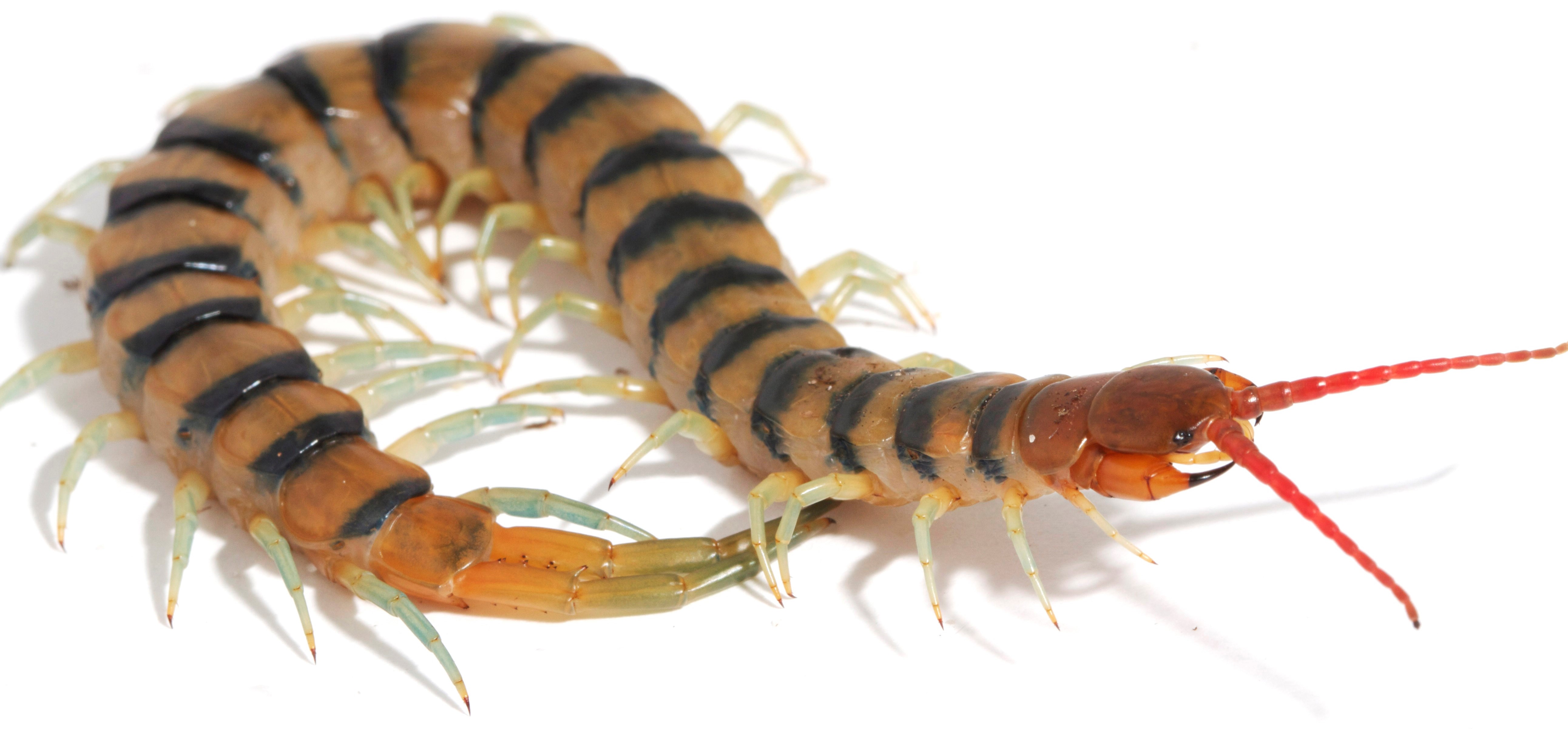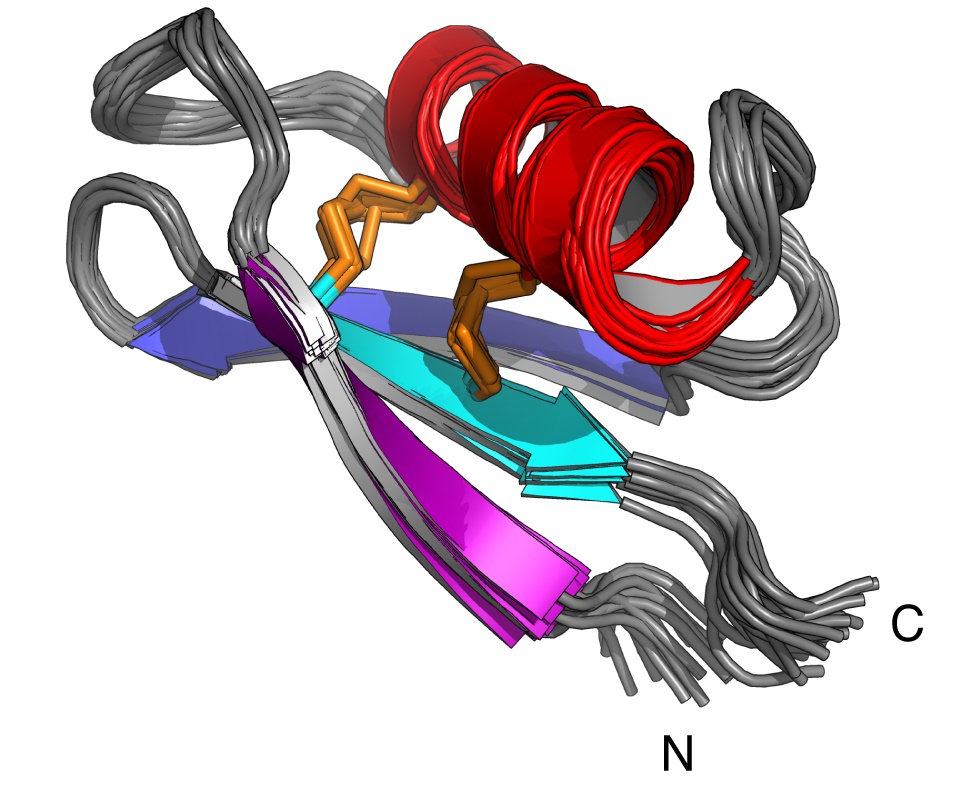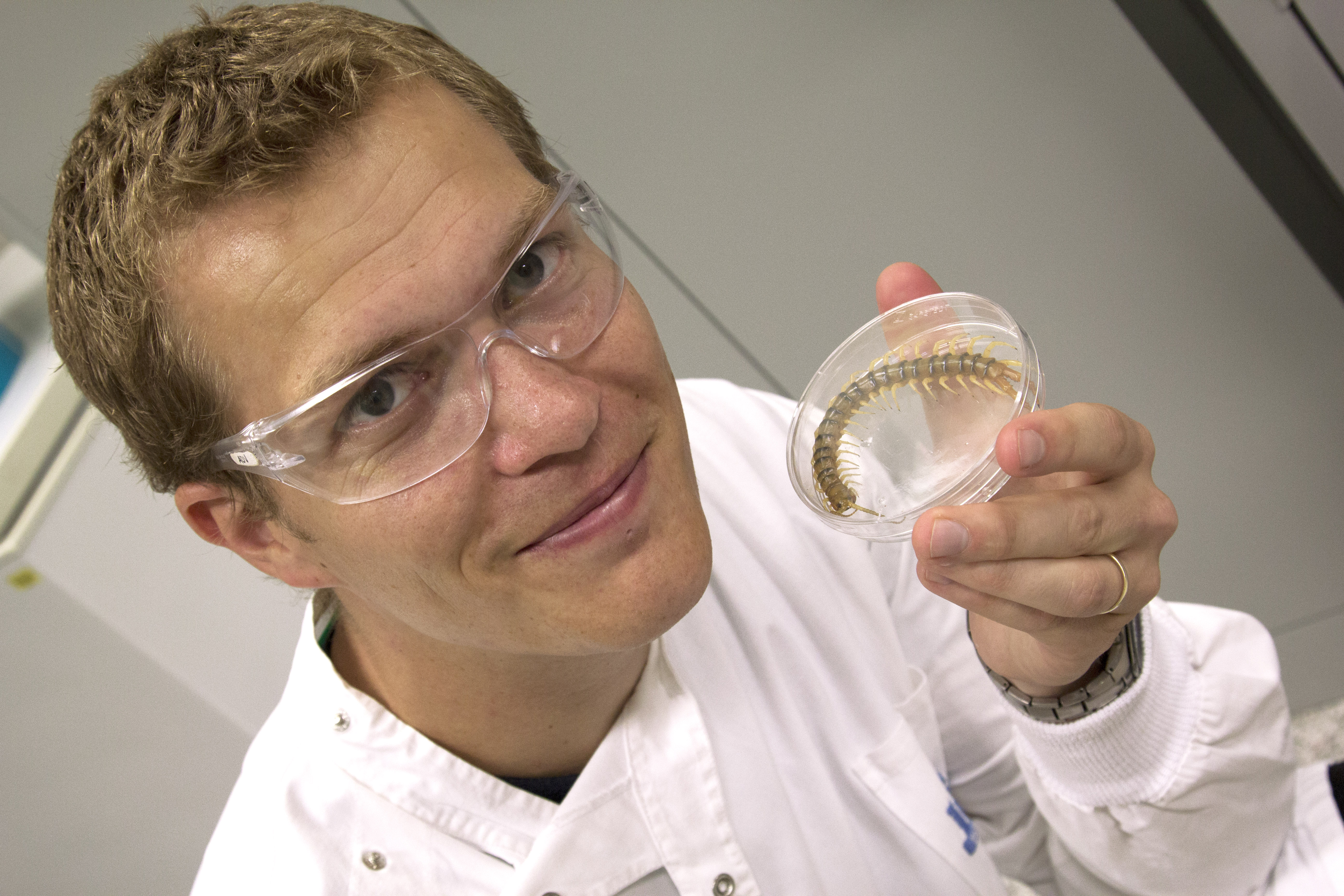An ancient class of peptides which likely originated near the dawn of cellular life has been discovered by University of Queensland researchers.
Venom researchers from the Centre for Advanced Imaging and Institute for Molecular Bioscience have found a toxin family in giant centipedes defines a unique class of immune-related peptides, or defensins, whose evolutionary origin dates back to before prokaryotes and eukaryotes split.
Peptides from animal venoms, known as toxins, have evolved over millions of years. However, almost nothing is known about their evolutionary histories.
“Centipedes are among the most ancient surviving venomous lineages at 450 million years old, yet very little is known about their venoms. Only nine of approximately 3,500 species have had their venom properties analysed in detail,” Dr Eivind Undheim said.

The discovery came from using 3D structures as evolutionary tools to overcome the unknown gap.
“Using the approach of 3D structures, we discovered one of the main peptide toxin families in giant centipedes represent a unique form of an extremely widespread immune-response peptide, one whose evolutionary origin predates the split between prokaryotes and eukaryotes.

“The ancient evolution of small proteins has long been a mystery – but now a centipede toxin has given us a piece to the puzzle.”
The study provides the most comprehensive reclassification of a disulfide-rich peptide family to date and gives first insight into important chemical structures for approaching drug therapy.
Understanding these origins may hold the key to creating better medical treatments and targeted therapy.
“Our results provide an exciting insight into the structural properties of a disulfide-rich peptide fold with therapeutic potential.
The findings can help us better understand how to approach new drug designs and tailor them for therapy.”
The study is published in Structure (DOI: 10.1016/j.str.2018.10.022) and was supported by the Australian Research Council.

Media: Dr Eivind Undheim, e.undheim@uq.edu.au;
Maria Moran, maria.moran@cai.uq.edu.au, +61 7 3365 1785



